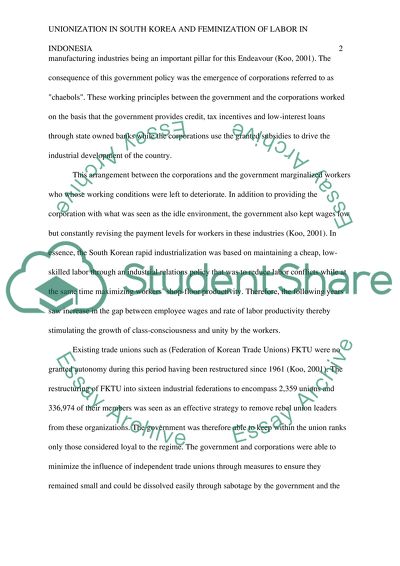Cite this document
(“Unionization in South Korea and Feminization of Labor in Indonesia Essay”, n.d.)
Retrieved from https://studentshare.org/social-science/1649310-unionization-in-south-korea-and-feminization-of-labor-in-indonesia-during-the-process-of-capitalist-development
Retrieved from https://studentshare.org/social-science/1649310-unionization-in-south-korea-and-feminization-of-labor-in-indonesia-during-the-process-of-capitalist-development
(Unionization in South Korea and Feminization of Labor in Indonesia Essay)
https://studentshare.org/social-science/1649310-unionization-in-south-korea-and-feminization-of-labor-in-indonesia-during-the-process-of-capitalist-development.
https://studentshare.org/social-science/1649310-unionization-in-south-korea-and-feminization-of-labor-in-indonesia-during-the-process-of-capitalist-development.
“Unionization in South Korea and Feminization of Labor in Indonesia Essay”, n.d. https://studentshare.org/social-science/1649310-unionization-in-south-korea-and-feminization-of-labor-in-indonesia-during-the-process-of-capitalist-development.


